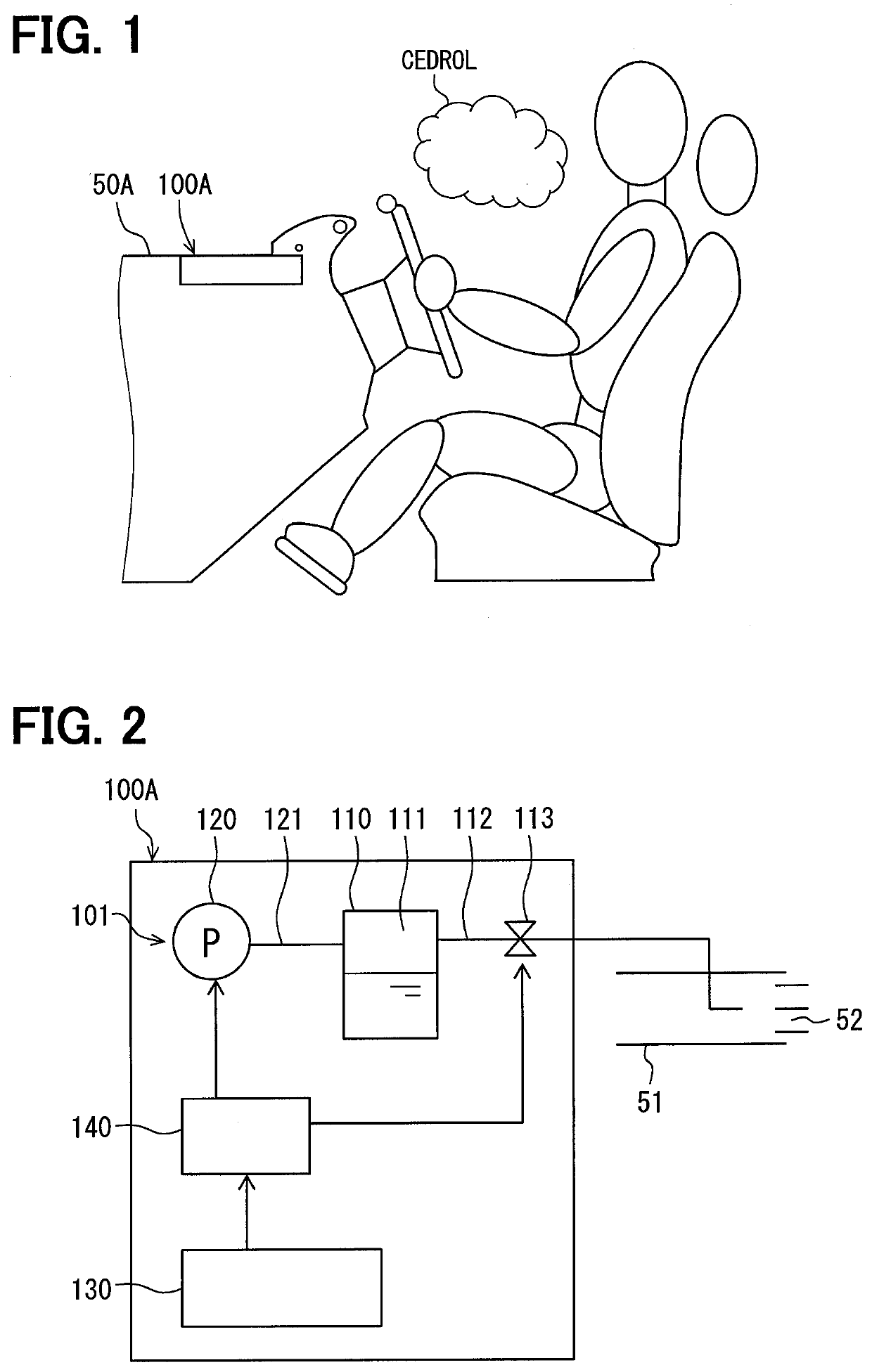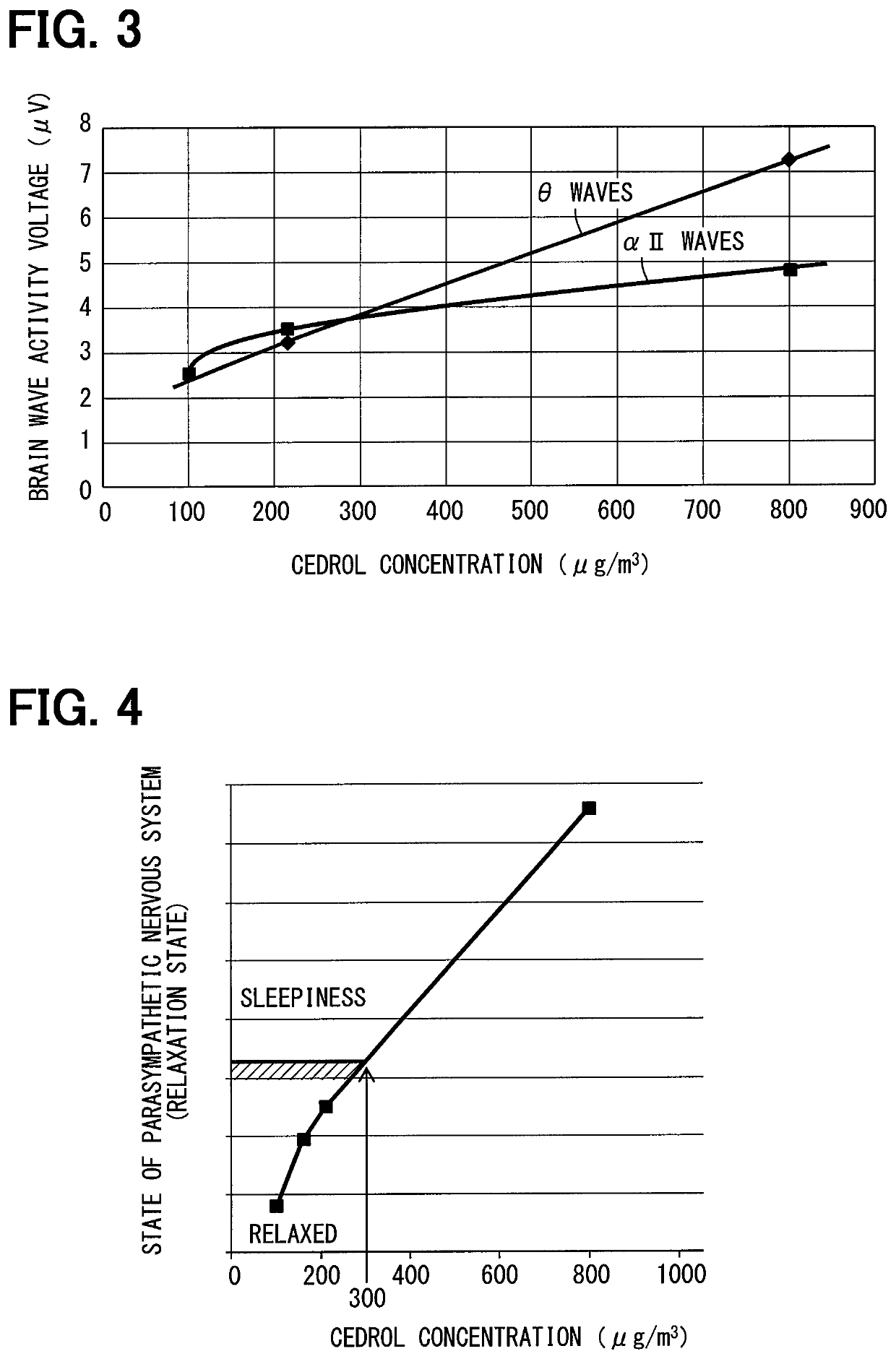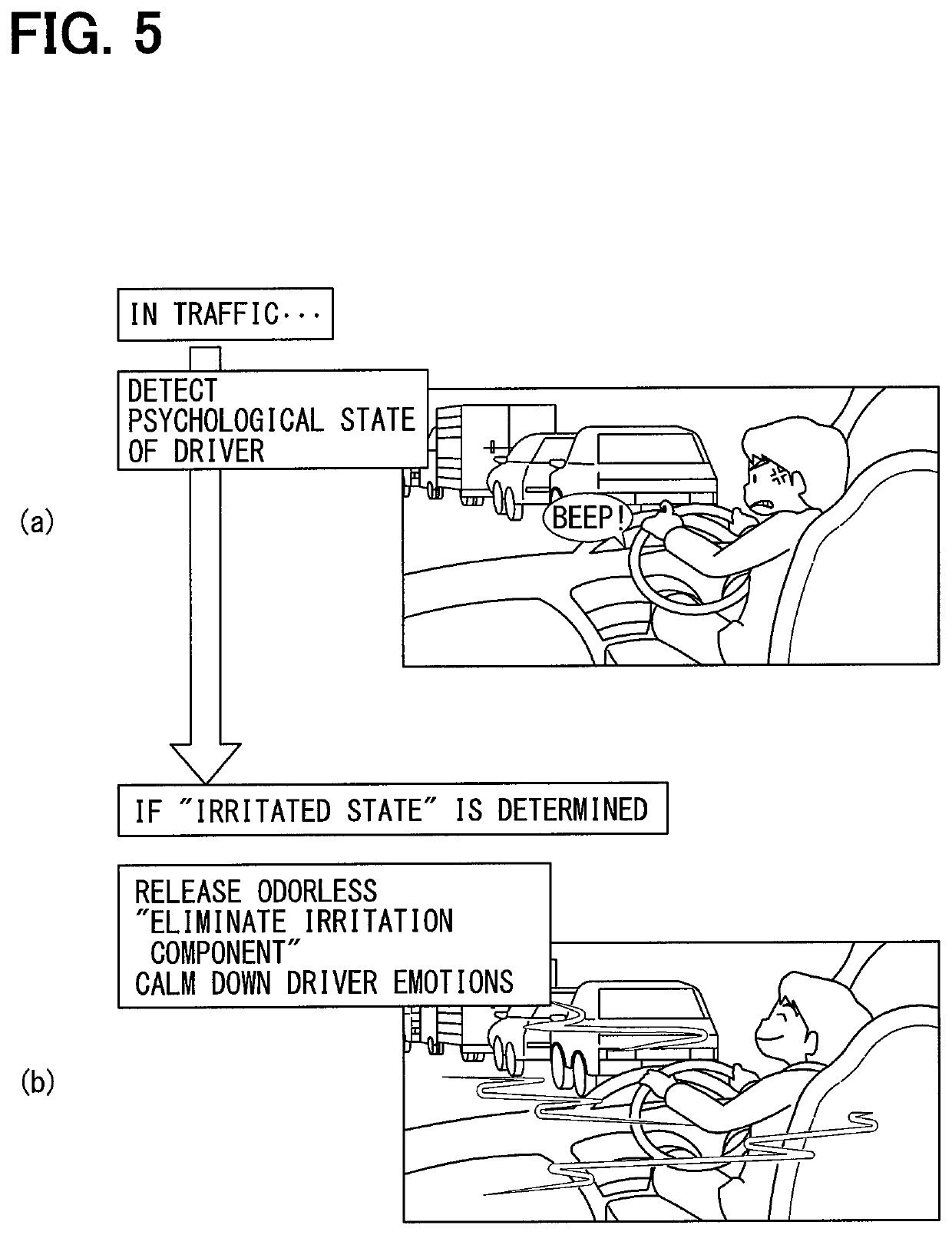Stress relieving device for vehicles
a technology for stress relief and vehicles, applied in the direction of sleep inducing/ending devices, diagnostic recording/measuring, spray delivery, etc., can solve the problem of promoting sleepiness, and achieve the effect of reducing the stress of passengers and drivers
- Summary
- Abstract
- Description
- Claims
- Application Information
AI Technical Summary
Benefits of technology
Problems solved by technology
Method used
Image
Examples
first embodiment
Modified Example of First Embodiment
[0056]In the above described first embodiment, the sleepiness level of the driver is determined based on detection signals of biological signals etc., but as shown in FIG. 7, the sleepiness level of the driver may be determined based on a distance between the vehicle and the center line during driving instead.
[0057]For example, by providing a camera outside of the vehicle that captures the centerline, the controller 140 may determine sleepiness based on a line separation distance between the present vehicle and the center line. The controller 140 determines that the driver is driving awake and not sleepy when the line separation distance is equal to or above a particular value. Further, when the line separation distance is small due to the vehicle approaching or crossing over the traffic lane line, and a ratio of vicinity to the center line is high, the controller 140 determines that the driver is sleepy. In FIG. 7, “consciousness decrease level” ...
second embodiment
[0060]A stress relieving device 100B of a second embodiment is shown in FIG. 8. The second embodiment, when compared to the first embodiment described above, introduces an input unit 150.
[0061]The input unit 150 may be, for example, an input switch configured for driver input disposed in the instrument panel 50A near the driver seat. The input unit 150 is configured to receive an input operation from a driver when feeling irritated, and outputs this signal representing irritation to the controller 140.
[0062]The controller 140, when receiving the signal from the input unit 150, operates the supply unit 101 to volatilize cedrol into the vehicle cabin regardless of the detection signal of biological signals etc. from the detection unit 130. In other words, according to the present embodiment, cedrol may be volatilized based on request from the driver.
[0063]Further, the controller 140 is configured to, based on the signal from the input unit 150, learn and update a determination referen...
third embodiment
[0065]A stress relieving device 100C of a third embodiment is shown in FIG. 9. The third embodiment, when compared to the first embodiment described above, introduces a heating unit 160.
[0066]Operation of the heating unit 160 is controlled by the controller 140. The heating unit 160 is configured to heat the cedrol in the supply unit 101, and may be, for example, an electric heater.
[0067]Due to this, by heating cedrol with the heating unit 160, the volatilization ratio of cedrol may be increased to increase the volatilization amount of cedrol, and is effective when the volatilization amount of cedrol into the vehicle cabin is to be increased.
PUM
| Property | Measurement | Unit |
|---|---|---|
| Density | aaaaa | aaaaa |
| Concentration | aaaaa | aaaaa |
Abstract
Description
Claims
Application Information
 Login to View More
Login to View More - R&D
- Intellectual Property
- Life Sciences
- Materials
- Tech Scout
- Unparalleled Data Quality
- Higher Quality Content
- 60% Fewer Hallucinations
Browse by: Latest US Patents, China's latest patents, Technical Efficacy Thesaurus, Application Domain, Technology Topic, Popular Technical Reports.
© 2025 PatSnap. All rights reserved.Legal|Privacy policy|Modern Slavery Act Transparency Statement|Sitemap|About US| Contact US: help@patsnap.com



